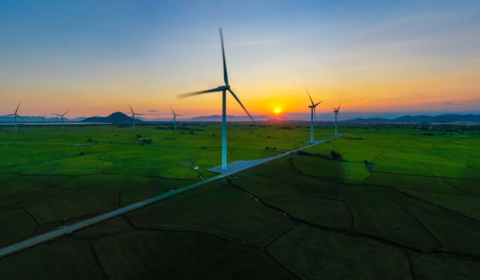
NAVIGATING THE WIND POWER MARKET IN VIETNAM
In recent years, Vietnam has emerged as one of the leaders in wind energy adoption among Southeast Asian countries. With a favourable natural potential for wind capacity, there is an abundance of opportunities for Vietnam's wind energy sector.
Join us as we chat with Nguyen Viet Dung, BV Vietnam CIF Country Chief Executive, and explore the driving forces behind its rapid growth, the challenges it faces, and the transformative impact it promises on the nation's energy landscape as we redefine energy to power tomorrow.
Interviewer: What are the some of the foreseeable trends of the wind industry in Vietnam?
Viet Dung: Vietnam has proven itself to have good construction capabilities in recent years. And certainly, the market is going towards an auction mechanism when it comes to competitive energy prices.
In terms of development, offshore wind energy will be mainstream as Vietnam has an abundance of offshore wind energy sources. In the proposed national plan, Vietnam will have 7GW of offshore wind power by 2030.
In addition, the Northern region is also a highly targeted area by investors because of two main reasons: Firstly, there is better transmission capacity in the North; And secondly, the market in the South is already highly saturated with both electricity demand as well as a surplus in supply capabilities.
Interviewer: For an investor, what are some of the challenges that they may face and how do they avoid them?
Viet Dung: It is a challenging time for investors who are investing in wind power to make their decisions. The difficulty for them at this point in time is the selling price of electricity, which is an unknown. This means there is no workable price frame for both onshore and offshore wind.
Secondly, there is also the difficulty in getting banks to finance the projects. The recent measures implemented by the domestic banks have also created challenges for international banks to disburse funds through the domestic banks.
The third is electricity demand. Vietnam needs to maintain the right balance between renewable energy and conventional energy in order to determine the need for future renewable energy development.
The fourth is the transmission capacity, especially for offshore wind power. It is a key factor as the transmission capacity of Vietnam is considered to be relatively debilitated and incomplete.
Interviewer: For a wind farm owner, what are some of the challenges that they may face and how do they avoid them?
Viet Dung: The issue that wind farm owners are facing is how to maximise their capabilities in the operation of the wind power plant efficiently. This is intertwined to the experience and skills set of the operations teams. Currently, Vietnam has many operating wind farms and most of them have started operations at the same time, thus we are short of skilled technicians.
The second is the financial difficulty when the output of the wind farms have been curtailed. While the plant has the ability to produce 100% of its capacity, it is unable to operate fully due to the grid transmission capability as well as the demand that is regulated by Vietnam Electricity.
This will affect the operating capacity and ability of the windfarm to make any returns on investment. This is also why windfarms need to have smart and effective operating and maintenance strategies.
Watch the interview below:
Country Chief Executive
Bureau Veritas Vietnam
With rich wind resources and increasing investments, Vietnam is expected to lead the green transition in Southeast Asia, marking its presence as a key player in wind power uptake.
